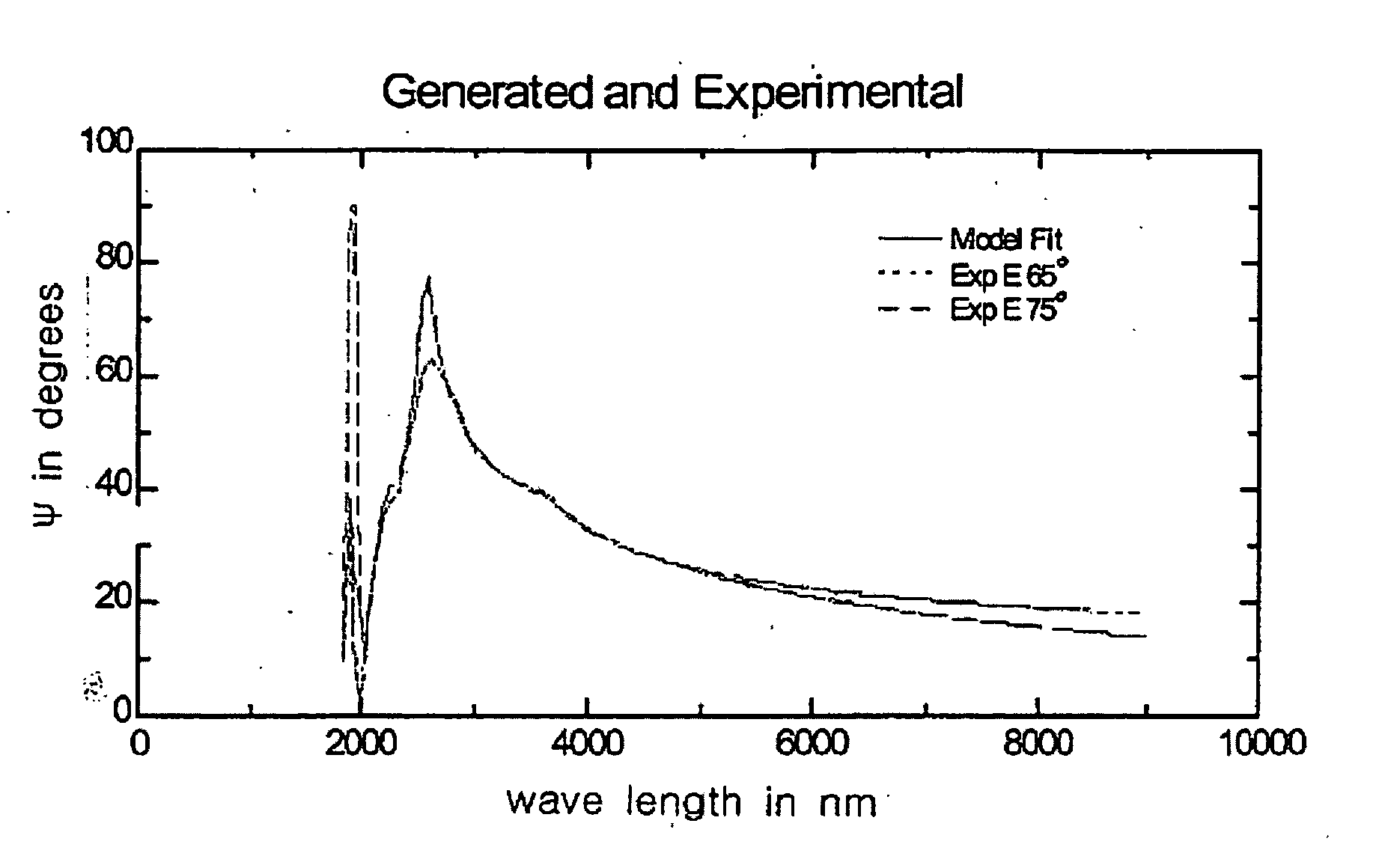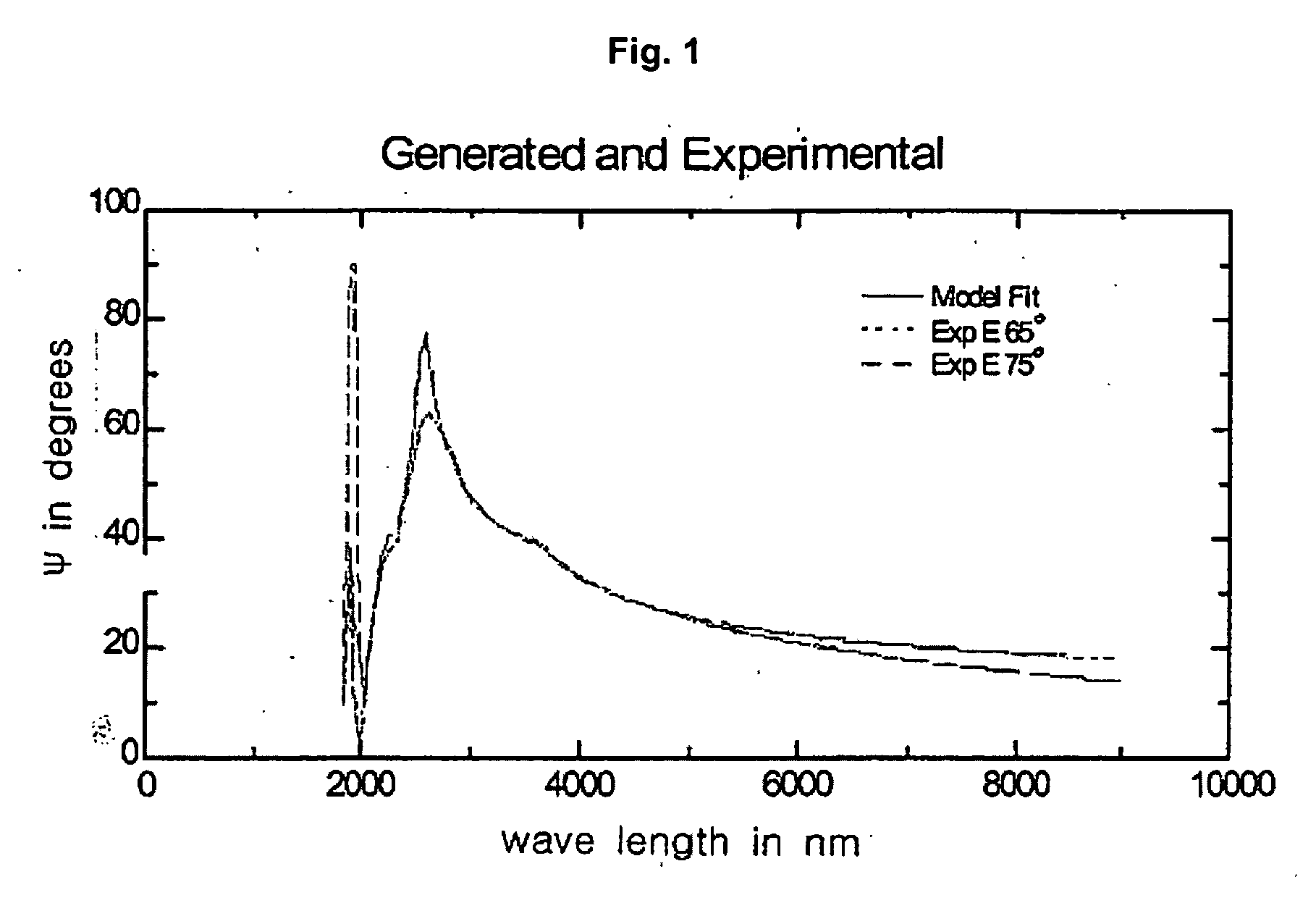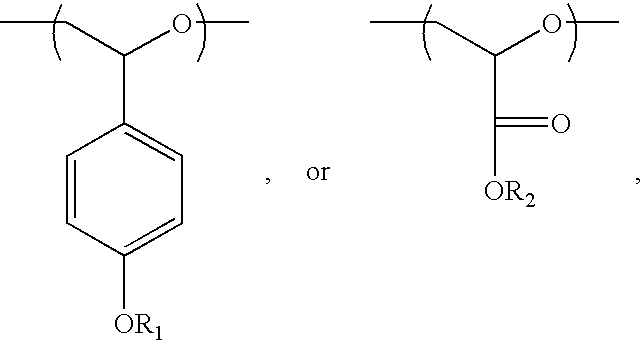Polymer for forming anti-reflective coating layer
a technology of anti-reflective coating and polymer, which is applied in the direction of photosensitive materials, instruments, photomechanical equipment, etc., can solve the problems of increasing the optical interference of the light reflected from the etching layer of the semi-conductor substrate during the exposure process, deteriorating the photoresist pattern profile and thickness uniformity, and the conventional composition for forming the organic anti-reflective coating layer is not satisfactory in its characteristics. , to achieve the effect of improving
- Summary
- Abstract
- Description
- Claims
- Application Information
AI Technical Summary
Benefits of technology
Problems solved by technology
Method used
Image
Examples
manufacturing example 1
Preparation of 4-acetoxy Styreneoxide
[0031] 30 g of 4-acetoxy styrene and 1 L of chloroform were added into a 2 L reactor, and was stirred and cooled in iced water. 47 g of 3-chloroperoxybenzoicacid were added into the cooled solution, and the reaction was carried out at room temperature for 24 hours. After completion of the reaction, the 3-chlorobenzoicacid (by-product) was removed by filtering the product, and then the residual 3-chlorobenzoicacid was removed by washing 2 times with saturated sodium sulfite aqueous solution, 1 time with saturated sodium bicarbonate aqueous solution, 1 time with saturated sodium chloride aqueous solution, and 1 time with distilled water. Next, the product was dried with magnesium sulfate, and chloroform was removed under reduced pressure, and then the product was vacuum dried for 1 day to obtain 27.6 g of the pure 4-acetoxy styreneoxide.
manufacturing example 2
Preparation of 2-hydroxyethyl-oxycarbonyl Ethyleneoxide
[0032] Except of using 30 g of 2-hydroxyethyl acrylate instead of 30 g of 4-acetoxy styrene, the reaction of Example 1 is carried out to obtain 25 g of 2-hydroxyethyl-oxycarbonyl ethyleneoxide.
manufacturing example 3
Preparation of Glycidyl-oxycarbonyl Ethyleneoxide
[0033] Except of using 30 g of glycidyl acrylate instead of 30 g of 4-acetoxy styrene, the reaction of Example 1 is carried out to obtain 22 g of glycidyl-oxycarbonyl ethyleneoxide.
PUM
| Property | Measurement | Unit |
|---|---|---|
| wavelength | aaaaa | aaaaa |
| weight % | aaaaa | aaaaa |
| weight % | aaaaa | aaaaa |
Abstract
Description
Claims
Application Information
 Login to View More
Login to View More - R&D
- Intellectual Property
- Life Sciences
- Materials
- Tech Scout
- Unparalleled Data Quality
- Higher Quality Content
- 60% Fewer Hallucinations
Browse by: Latest US Patents, China's latest patents, Technical Efficacy Thesaurus, Application Domain, Technology Topic, Popular Technical Reports.
© 2025 PatSnap. All rights reserved.Legal|Privacy policy|Modern Slavery Act Transparency Statement|Sitemap|About US| Contact US: help@patsnap.com



